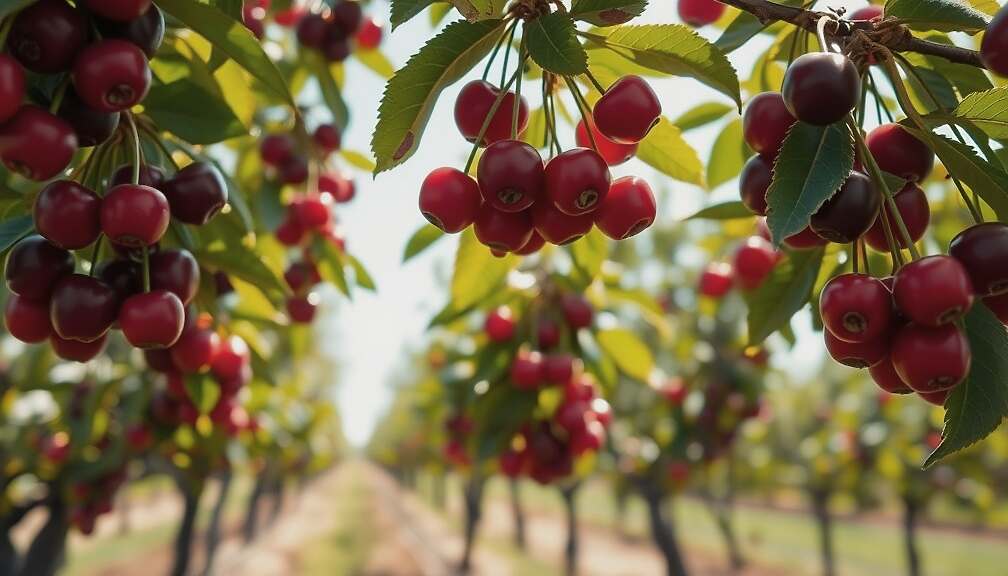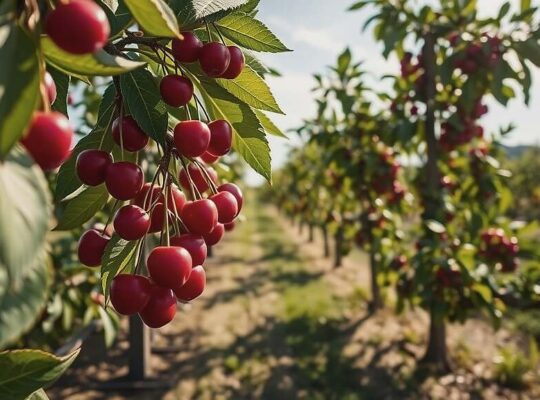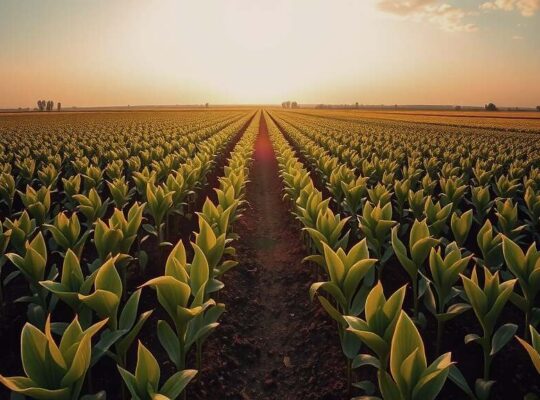Germany’s fruit farms have reported a robust cherry harvest for the summer of 2025. According to final estimates released Monday by the Federal Statistical Office (Destatis), a total of 47,100 tonnes of cherries were harvested. This comprised 79% (37,300 tonnes) of sweet cherries and 21% (9,800 tonnes) of sour cherries.
The 2025 harvest represents a 4.2% increase compared to the ten-year average from 1995 to 2014, which stood at 45,200 tonnes. It also marks a significant improvement over the markedly below-average harvest of 35,400 tonnes in the previous year, with an additional 11,700 tonnes – nearly a third – of cherries produced (+33.1%).
The final estimate for sweet cherry production reached 37,300 tonnes, a 33.6% increase compared to the low yield of the previous year, which was influenced by weather conditions. Compared to the ten-year average of 32,900 tonnes, fruit farms recorded a gain of 4,400 tonnes, or a 13.3% increase. The favorable sweet cherry harvest was supported by mild weather during the flowering period and a general absence of frost and hail events across most growing regions.
Sweet cherries are cultivated across 5,700 hectares in Germany. Baden-Württemberg is the leading state, accounting for 2,600 hectares of land dedicated to their production. This region produced 17,600 tonnes of sweet cherries, representing 47% of the nation’s total. Lower Saxony follows with 5,000 tonnes harvested from 480 hectares. Although Rhineland-Palatinate (660 hectares) and Bavaria (540 hectares) have larger areas dedicated to sweet cherry cultivation, they yielded smaller harvests of 3,700 and 1,800 tonnes respectively.
While Baden-Württemberg experienced a slight decrease in sweet cherry production this year (-1%) compared to the previous year, Lower Saxony (+67%), Rhineland-Palatinate (+76%) and Bavaria (+30%) all significantly surpassed their prior harvests. These regional variations are attributable to the exceptionally good sweet cherry harvest achieved in Baden-Württemberg in 2024, while other regions faced weather-related yield losses.
The final estimate for sour cherry production totaled 9,800 tonnes. This represents a 31.3% increase over the considerably low-yielding previous year, with a harvest of just 7,500 tonnes. Although an initial preliminary estimate in June suggested a harvest of 11,700 tonnes, potentially approaching the ten-year average of 12,300 tonnes, the final yield ultimately fell 20% short. Contributing to the limited harvest, alongside weather conditions, was a reduction in the area dedicated to sour cherry cultivation, decreasing from 2,000 hectares to 1,500 hectares (-25%).
Rhineland-Palatinate leads in sour cherry cultivation with 460 hectares, followed by Saxony (300 hectares) and Baden-Württemberg (240 hectares). Rhineland-Palatinate produced the largest harvest at 2,700 tonnes (+40% compared to the previous year), followed by Thuringia (1,900 tonnes, +179%) and Saxony (1,800 tonnes, +1,249%). These year-on-year changes highlight the weather-dependent challenges of 2024, particularly in eastern German states where near-total harvest failures were observed in some regions.




